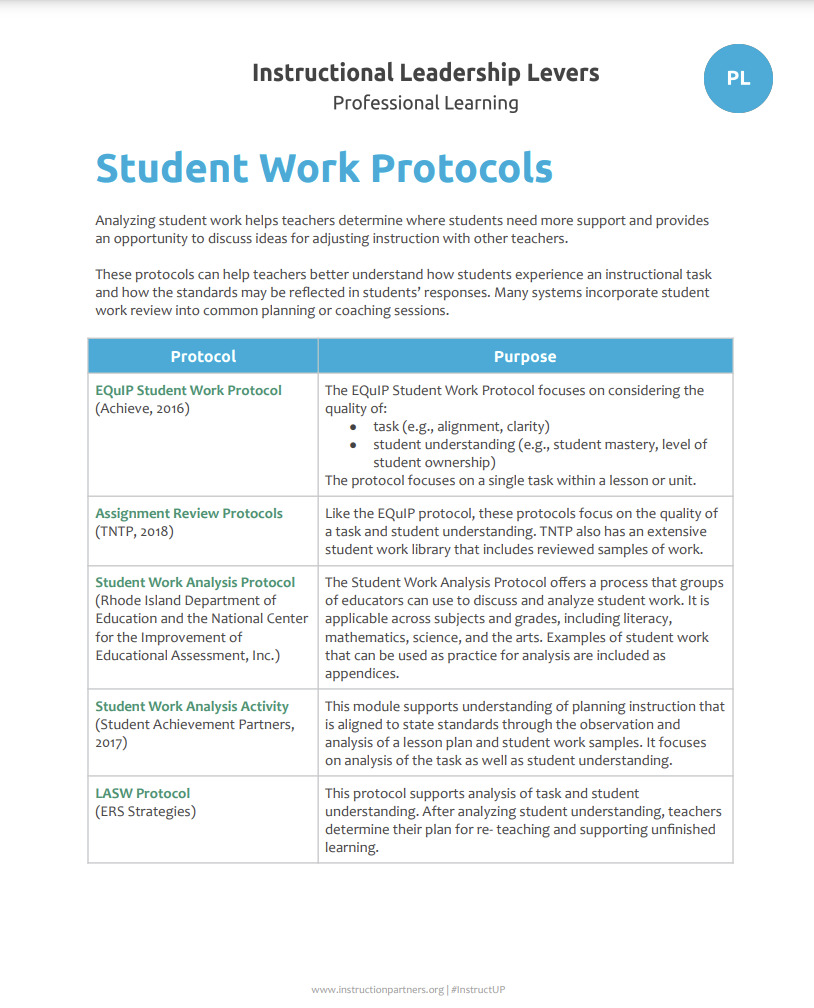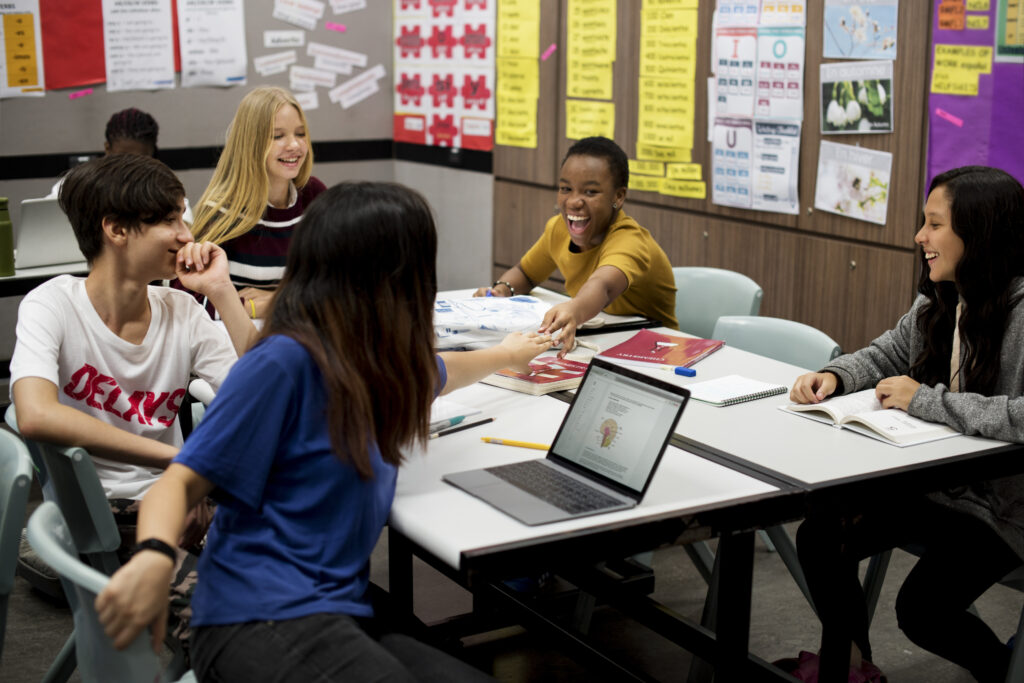
Driving improvement with student work analysis
This is the final post in our 3-part series focused on effective practices for teacher collaborative planning—otherwise known as professional learning communities (PLCs). Check out part 1, Unlocking the Power of Unit Internalization and part 2, Preparing High-Quality Lessons.
After teachers have identified their unit-level learning goals and delivered a lesson, student work analysis connects planning to progress monitoring—helping teachers identify where students need more support and adjust future lessons to meet those needs.
What is student work analysis?
Student work analysis is the process of analyzing student work for two purposes: 1) to determine if the task is aligned to grade-level standards and 2) to inform instructional next steps based on the depth of student learning.
Why is student work analysis important?
Analyzing student work provides teachers with insight into how well students understand the grade-level content—and this insight can inform how they prepare future lessons.
This practice is also valuable for school leaders because it provides an immediate, timely view into student learning that can help inform instructional priorities and school improvement efforts.
How can you support effective student work analysis?
Here are four steps you can take to implement or strengthen student work analysis during collaborative planning time:
Decide the student work you’ll prioritize for analysis
- Consider data sources that are:
- embedded in the curriculum;
- common across grade levels or content areas;
- centered on students who need the most support with unfinished learning;
- most actionable for teachers, such as daily exit tickets that match the lesson and/or unit assessments; and
- feasible to analyze within the time constraints of the collaborative planning time.
- Choose the type of student work that teams will, at least initially, analyze (see Sample Data Sources for guidance that can help inform this decision).
Adopt and refine a protocol
- Review the student work analysis materials provided by your curriculum.
- Check materials for bias and asset-based framing; adjust as needed (see Asset-Based Student Work Analysis for additional guidance).
- Name the intended purpose(s) of student work analysis (e.g., to inform instructional decisions, to determine alignment to standards); revisit your instructional vision to help determine the purpose of this practice.
- Decide how teachers will identify and prioritize focus students (i.e., students who need the greatest support to access the content being taught relative to their classmates).
- Consider schoolwide instructional improvement needs, teacher needs, and time constraints to determine the aspects of student work analysis that teachers will do collaboratively vs. independently.
- Adopt or refine a protocol that ensures:
- equitable data analysis (e.g., 6 Steps to Equitable Data Analysis);
- meaningful teacher engagement in analysis within the constraints of the meeting time; and
- alignment with the stated intended outcome of this time.

Student Work Protocols
We compiled a list of 5 high-quality protocols that can help teachers better understand how students experience an instructional task and how the standards may be reflected in students’ responses. You can download and adjust these protocols to meet your unique context and needs.
Provide clarity around pre-work expectations
- Determine what pre-work is reasonable based on your team’s capacity and its support needs.
- Discuss and agree on concrete deadlines for pre-work so that all teachers and facilitators can meaningfully engage when meeting; revisit those proposed timelines with teachers as needed.
- Based on decisions made around what work will be done collaboratively vs. independently, provide clear expectations for what teachers/facilitators should have done in advance of student work analysis meetings (e.g., graded exit tickets, identified initial trends in student work).
- Provide a completed example of the quality and depth you are expecting from the pre-work to ensure that teachers and facilitators are clear on expectations.
Monitor effectiveness
- Review artifacts (e.g., teachers’ pre-work, observations of analysis conversations).
- Monitor impact on instruction by observing classroom instruction.
- Continue to monitor the conditions for the collaborative planning structure (e.g., Teacher Survey; Facilitator Survey); respond to data and feedback by making ongoing adjustments to the process as appropriate.
- Monitor progress toward intended outcomes for student work analysis (e.g., Student Work Analysis Rubric).
Remember that context matters
When it comes to teaching and learning, we know that there is never a one-size-fits-all strategy for improvement. As you plan to take the actions above, it’s useful to consider the particular context of your school.
The guiding questions below can help you think through how you might adjust actions to meet your team’s specific needs:
- Does your school have the right conditions in place for collaborative planning to be successful?
- What is the culture of discussing learning and data in your school? How do teachers and leaders use data to inform decision making? How might that context impact student work analysis?
- What is the team’s familiarity with student work analysis as a practice? Has it been successful or challenging in the past? How will that impact your current work?
- What is the team’s knowledge of grade-level standards? Is there more you need to support to ensure that student work analysis builds content knowledge for teachers and leaders?
- What is the team’s knowledge of the curriculum? Is there any foundational training you need to add to the plan?
With these action steps and guiding questions, leaders can create the conditions for teachers to engage in meaningful student work analysis.
Explore the Professional Learning Conditions and Practices for more action steps, guiding questions, and resources to help.
Takeme
there


